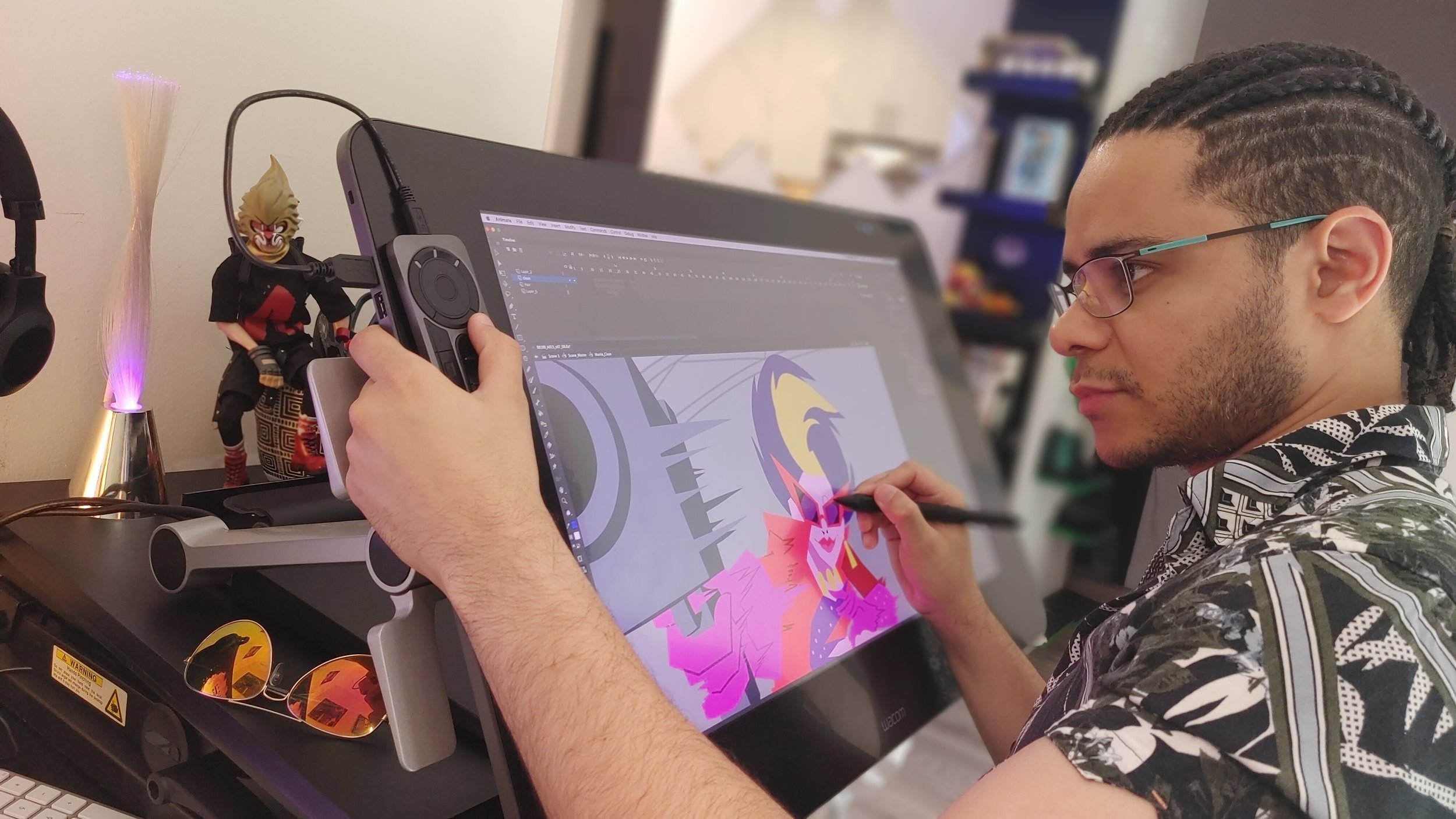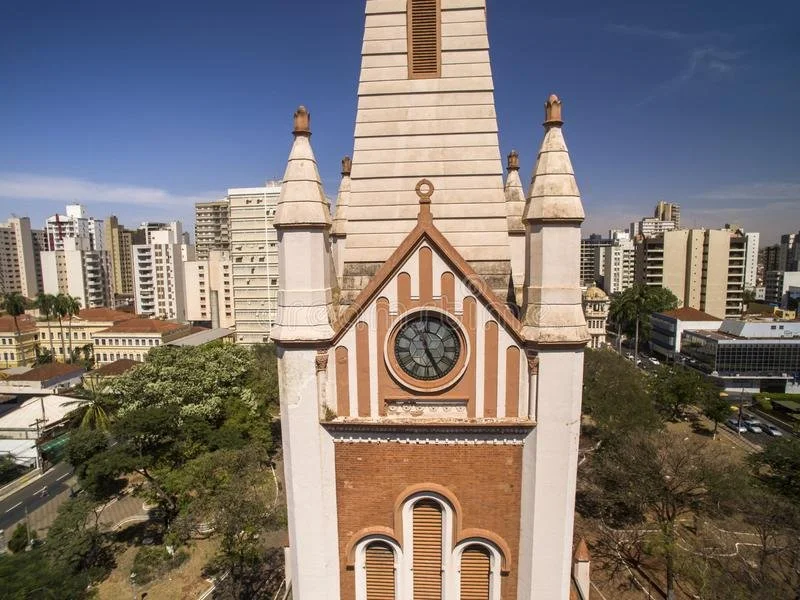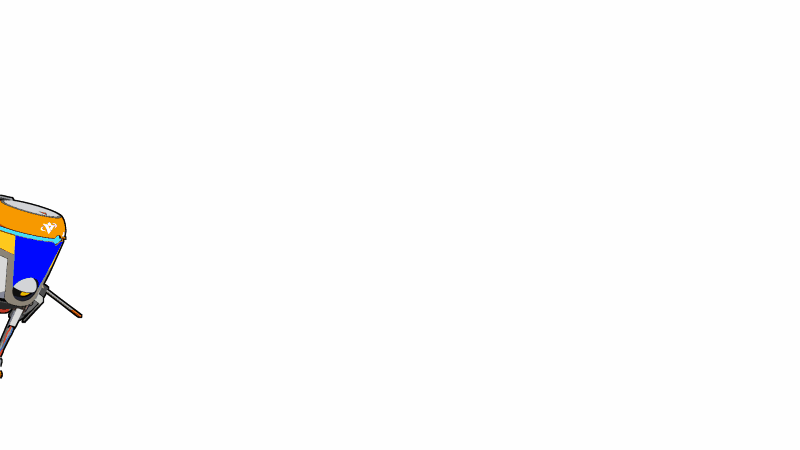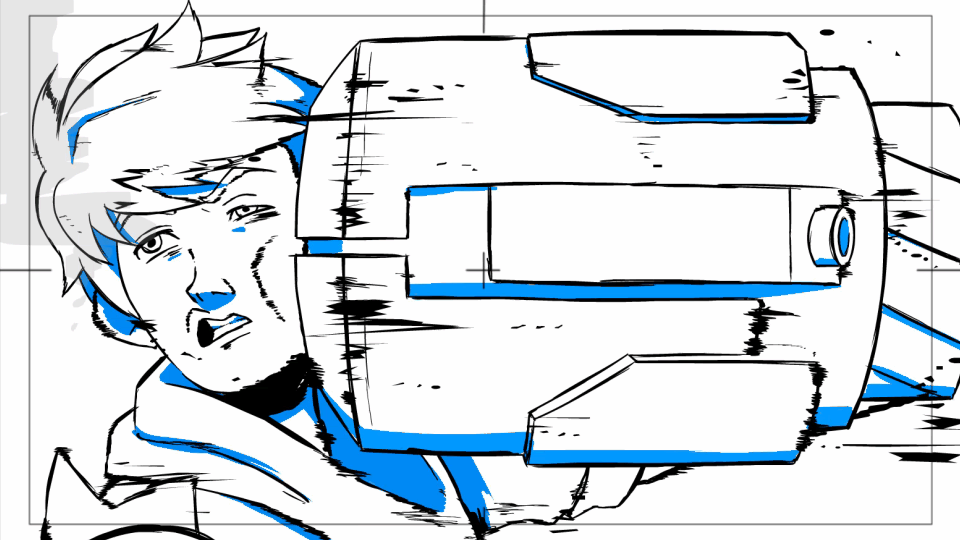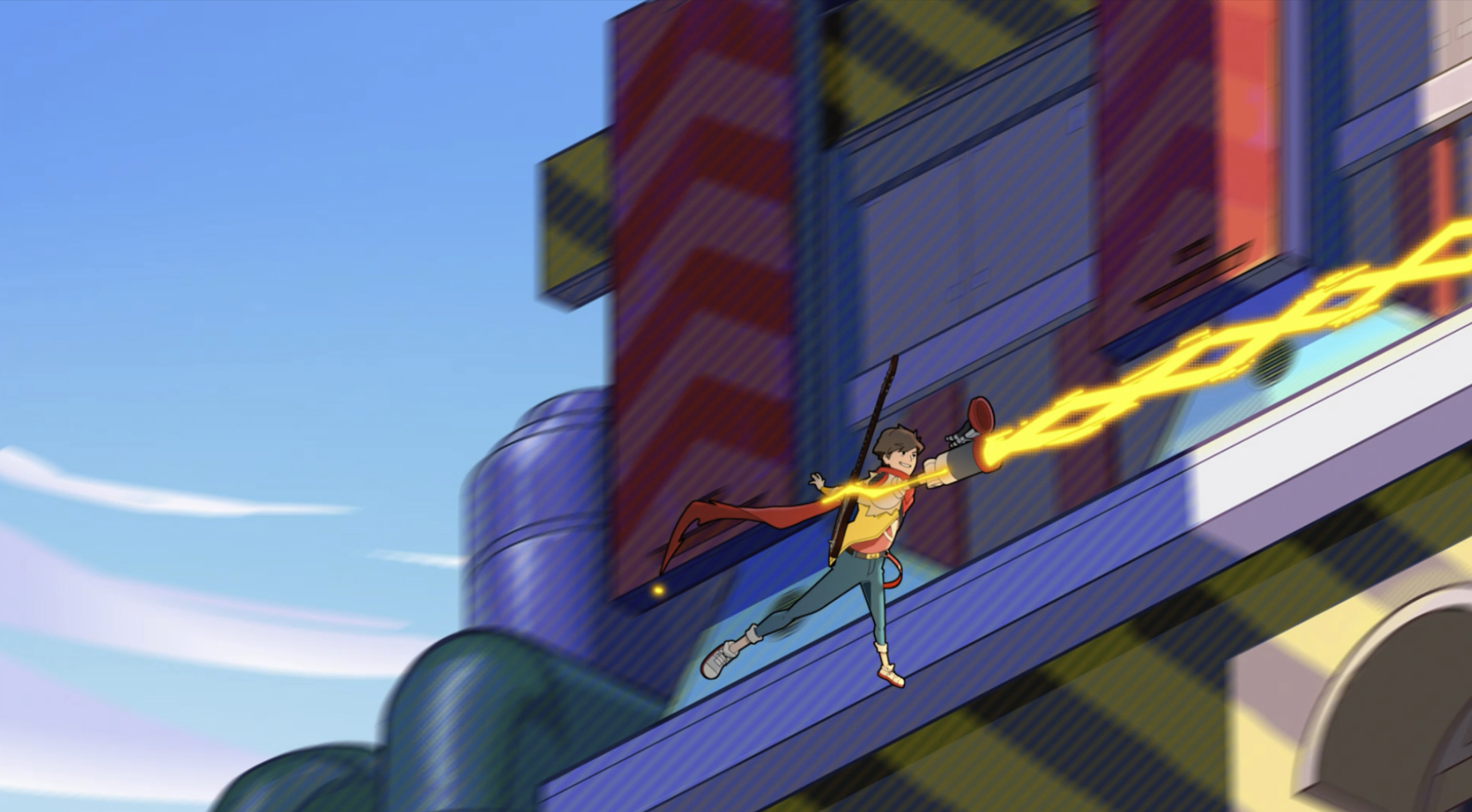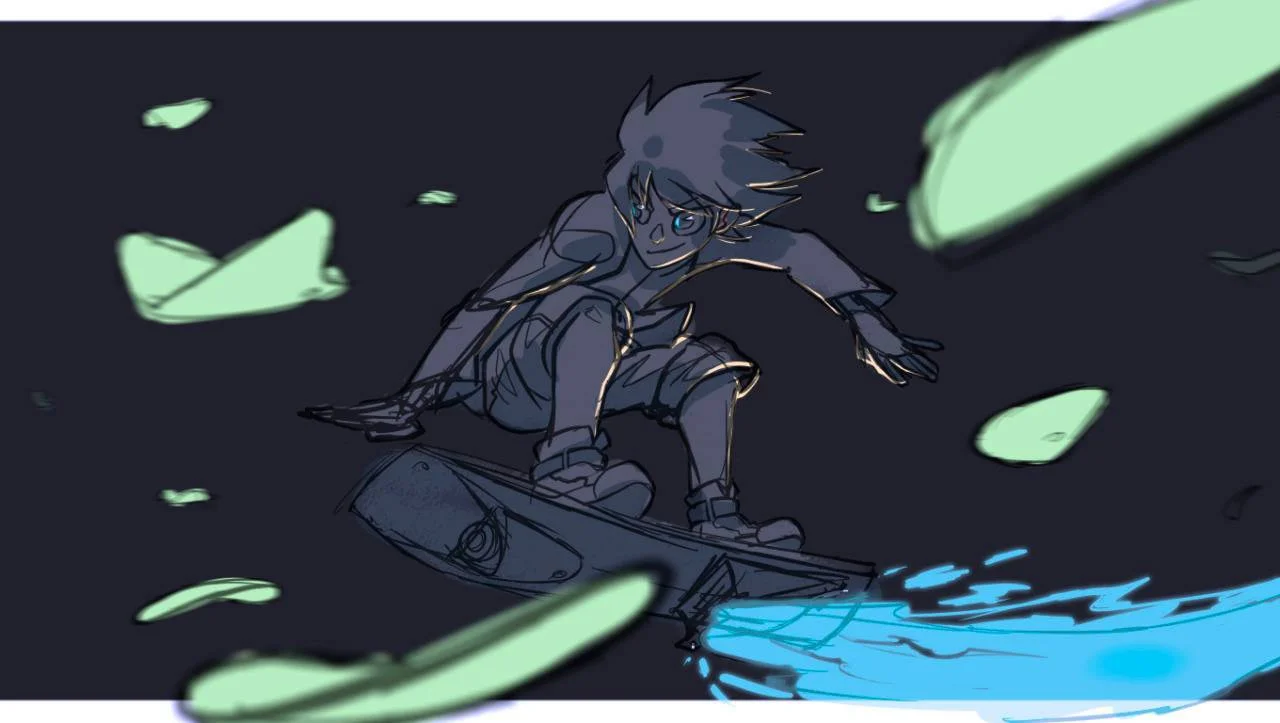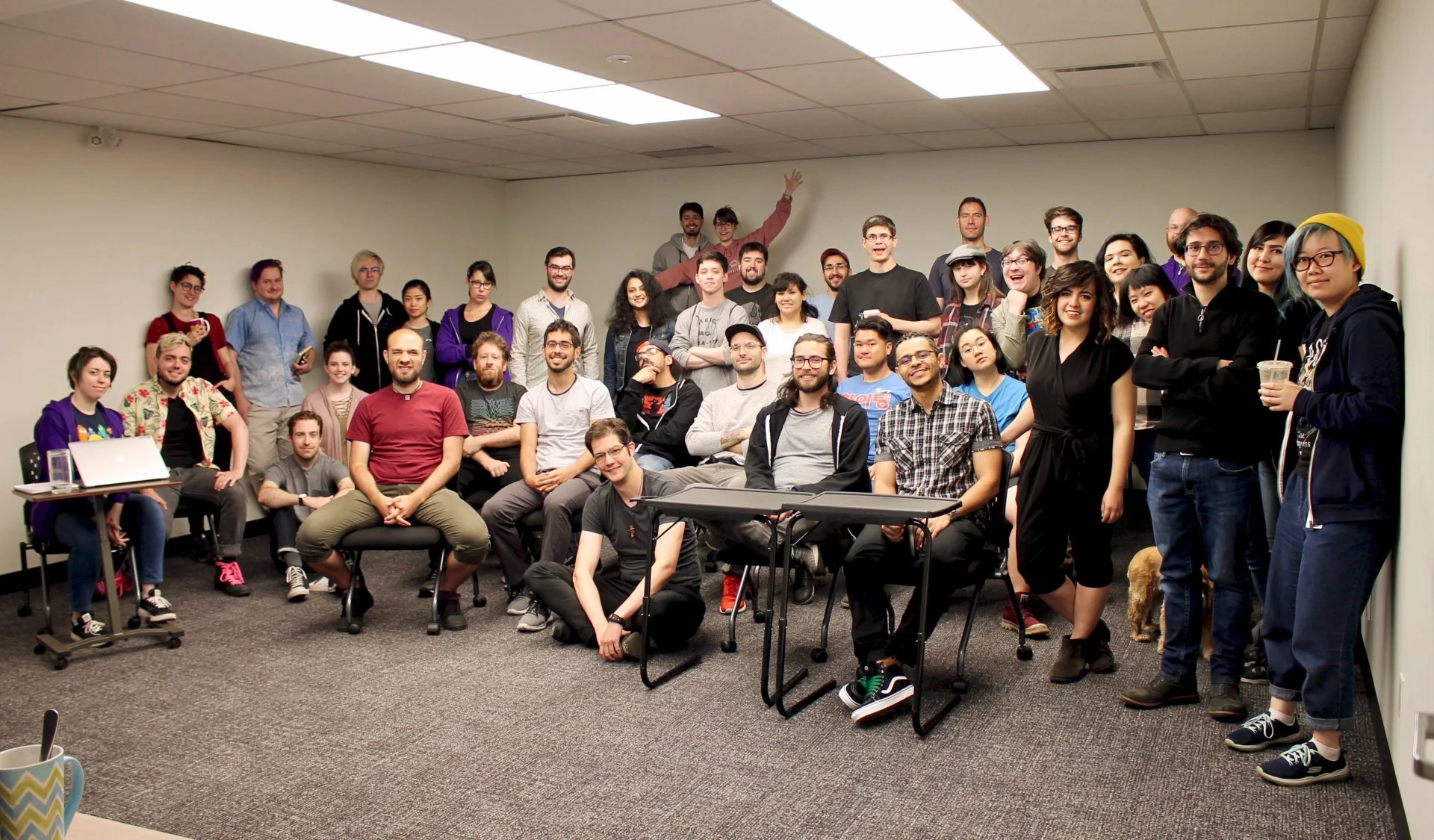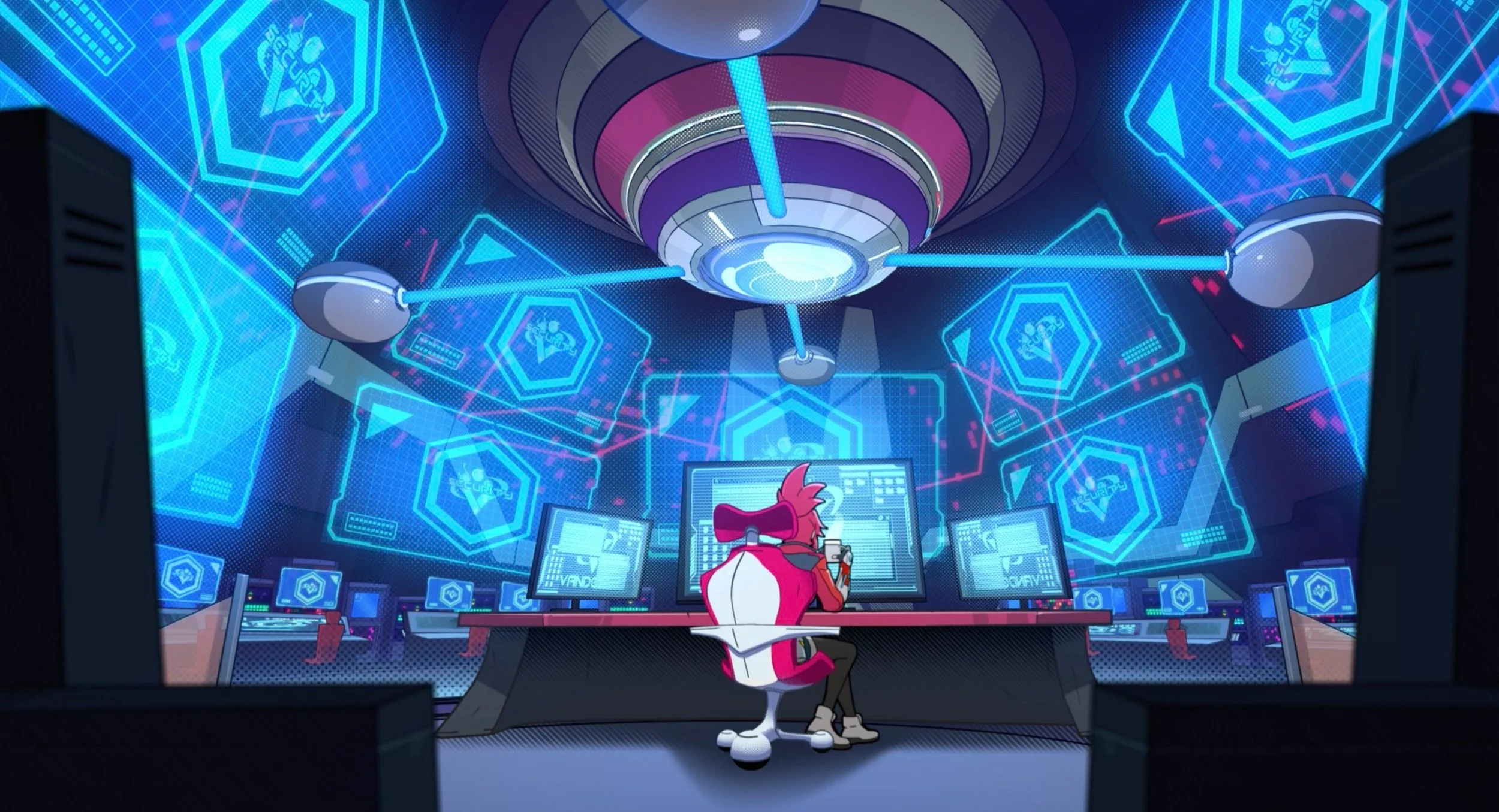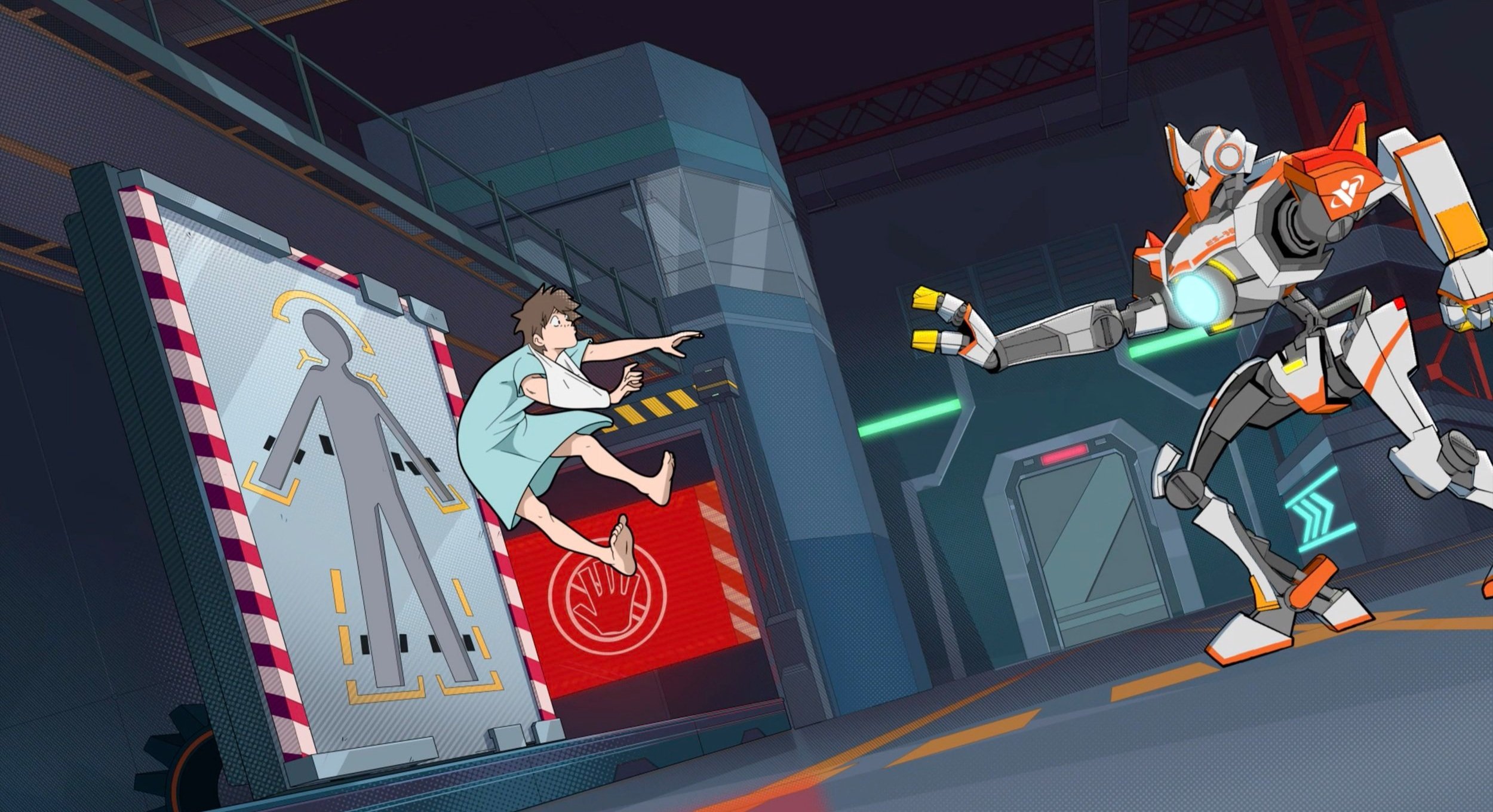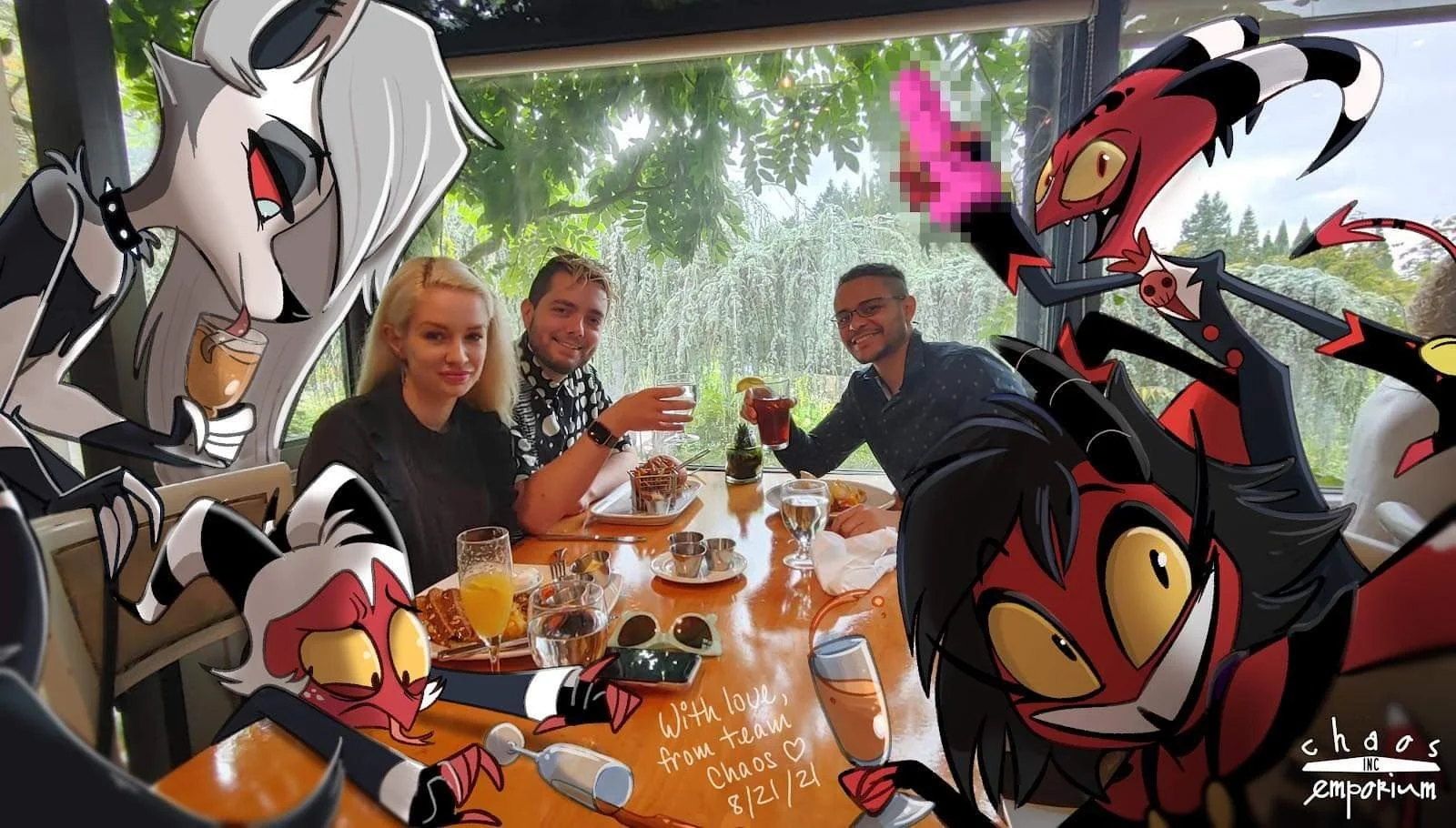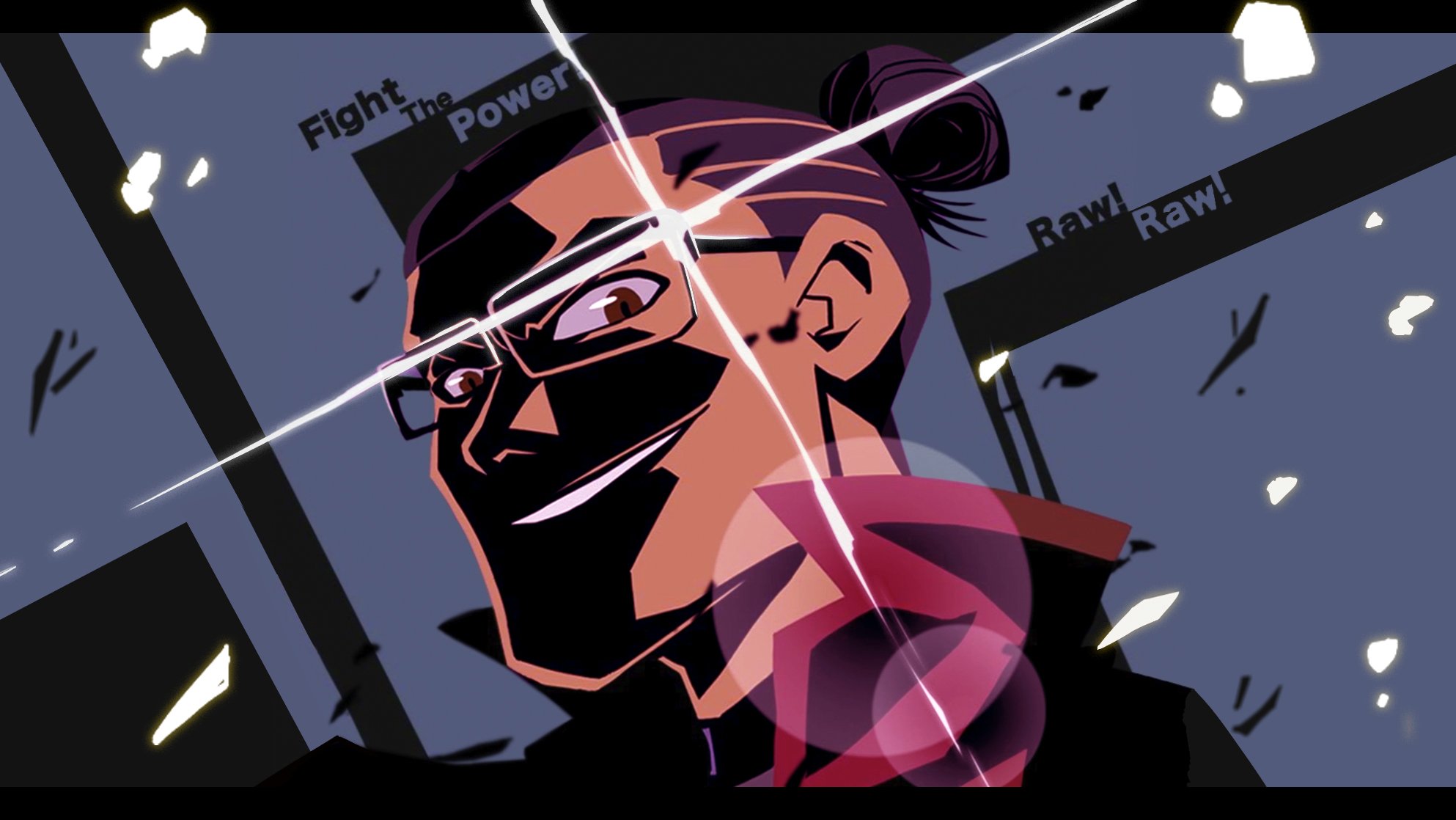Douglas de Azevedo
/Thank you for accepting our invitation, Douglas. Where did you grow up? At what age did you start thinking about pursuing an artistic career?
Thanks for having me here, I'm a huge fan of Character Design References so it is an honor to be featured in this interview. I was born and raised in a country town called Ribeirão Preto in São Paulo state, Brazil. I've been in love with cartoons since a very young age, especially Japanese anime, and due to that, I was constantly trying to draw them. I learned that it could be an actual career only when I was a teenager around 15 years old, and from that time on I decided to become a professional artist.
Did you go to an art school or are you self-taught? How did you develop your skills?
Since there are no art-related schools in Ribeirao Preto I was not able to study in a college, or anything related to that. My family didn't have enough money to pay for university as well, so I ended up learning on my own. I basically taught myself through observation and repetition, I would watch hours and hours of animation content, and thanks to YouTube, I was able to learn a lot by studying other animators’ works, frame-by-frame. I was always trying to understand how they make scenes look so dynamic and fluid, then I would try to apply the same to my own work. My most enjoyable thing was playing with action animation (you know back in the day when Linking Park and AMV were a thing? Haha). I focused mostly on that sort of action animation, and because of that, I was lacking on acting skills. That only changed when I passed on an animation test to work on “Jorel's Brother” a Brazilian cartoon network production back in 2014, that was when I moved to the City of Rio de Janeiro and started my professional career as a 2D animator at an animation studio called Copa Studio.
My very first professional character design/Animation freelance works back in 2012 (before Copa Studio)
There I learned how to animate cartoony acting animation. There were so many talented and experienced artists in that studio, so I was able to absorb a lot of information from those folks by watching their work. They were super nice people so sharing knowledge was a pretty common thing at the studio. We call it exchanging cards, and I would say that it will never end, we are constantly learning from other artists on each different project we work on.
Jorel's Brother animation team at Copa Studio, Rio De Janeiro, Brazil
Have you always been supported in your artistic path or has it been challenging to let your family and friends understand your choice?
Even though my family didn't have money, they never tried to stop my dream of becoming an artist. Usually, some families try to convince young teens to pursue something more stable and predictable such as a career in administration, advertising, law, or work for the government due to the stability and good profit, but they never tried convincing me of any of that. The most important person in my life was my mom, a single mother of 2 that worked a lot to raise me and my sister. She was a professional housekeeper and, unfortunately, that is one of the lowest-paid jobs in Brazil. Despite this, she never asked for some of the money I would make on my first job (that was a common practice in low-income families), so that allowed me to save enough to buy my first computer and promote my skills with digital artwork when I was 15 years old. My pay was pretty low back then, so it took me around 5 months, by saving every penny, to have enough money to buy a computer. I bought it one piece at a time, one month the keyboard and mouse, another one the monitor, and the last 3 months the CPU. Thankfully, nowadays I'm able to help my mom out financially but in my mind, no matter how much I help her, it will never be enough compared to the amount of sacrifice she had to put out in order to raise me and my sister. She is, and will always be, my true hero.
Ribeirão Preto
What was the strongest artistic influence you had growing up ( artists, movies, cartoons, comics, etc.. )?
I would say that the strongest one was a Japanese studio called Studio Bones, I loved many other works from studios and Western productions as well, but Studio Bones struck me differently due to their character design and realistic action animation style. One of my favorite animators to this day is Yutaka Nakamura, he is a staff member of Studio Bones and I knew his work much before I learned his name, back then to me he was the representation of Bones' animation quality. There are other Japanese animators as well such as Sushio, Yo Yoshinari, Yoshimichi Kameda, Shingo Yamashita (I love his direction and compositing skills) and the list goes on. As for Western artists I love James Baxter's work and I see him as one of the most talented ones due to the amount of control over the model that he has, he is extremely precise with three-dimensional rotations and ultra-clean tiedown animation. There are many other very talented Western artists as well, but he is definitely one of a kind.
What part of the creation process is the most fun and easy for you, and what part is the hardest?
When animating, the rough animation stage! That's when we get to explore ideas, timing, and have the most fun with the scene/sequence. The hardest one would be the tiedown, I usually say that if we have too much fun being too loose with a rough animation, we will pay the price during the tiedown, because that's when the design skills come in and I'm awful at that (laughs). I'm comfortable working on characters that have a well sorted out character design, but if the model is not fully sorted out I will take longer to get things properly done because I will need to figure out how they work in a three-dimensional space. When directing, I basically enjoy every single step, even though I'm not great at design I can learn how to approach designs that have a good turnaround considerably fast, so I love working on redlines and keeping everything consistent, I also like establishing how the overall look of a project will be and setting up the bar for animation, all of course taking into consideration the budget and schedule of the project. A lot of times we need to be creative within the limitations of the project, so if a budget isn't that great, we can find ways of making something more economic but still look nice at the end.
Star Wars Galaxy of adventures, animation by Douglas de Azevedo
You recently had your directorial debut. Could you tell us more about this project?
The project's name is Hi-Fi Rush, is a game from John Johanas for Bethesda with Tango games (at the time Shinji Mikami's studio) I worked with Titmouse LA and was responsible for directing the 2D animated sequences of the game, and it was one of the coolest experiences that I've had in my 10 years of industry so far. Since it was a small project I was responsible for overseeing all the departments supervising storyboards, character design, compositing, and directing animation as well. I also got to storyboard the ending credits with the help of two revisionists, Ivan Freire, and Debra Renga. It was hella fun.
The biggest challenge with Hi-Fi Rush was the style which is a unique mix of anime with cartoons not only in terms of design but also in the way it is animated. The game has this very Western acting style mixed with crazy fun anime action, and because of that, I had to make sure all the artists could hit that sweet mix of cartoon bouncy animation and anime art style with dynamic action scenes, and that's not as easy as it sounds. We usually have animators that are specialized in anime, and others that are more familiar with the Western style. Mixing both and keeping things consistent was the main challenge out of many other things such as keeping consistency in mechanical parts of characters, matching backgrounds, compositing, and keeping the storyboard dynamic as possible without jeopardizing the budget. In a few scenes, you can see the more dynamic anime action-style animation, and in some others the more fluid bouncy acting animation, you can see two examples below.
Western animation style: 2D animation by Madalin Truica and 3D animation by Nicolas Mendes
Anime animation style: Animation by Ian Dominic Alejo
Another fun challenge in this project was that all the sequences had to sync up to the music or Metronome (In case the music wasn't ready yet). For the game intro, we animated following the bit of "Lonely Boy” (by Black Keys from the “El Camino" album). For the 3 cutscenes, we had 3 different metronomes, and then for the ending credits we followed the bit of "Honestly” (by Zwan). This music has a very early 2000's anime vibe, and I loved it! I was storyboarding the ending credits while two other artists, James Q. Nguyen and Rojo Martin Gil were working on the intro and cutscenes, I was also supervising character design on the side, we had to simplify the design of the characters so they could become more 2D animation friendly. John and the folks at Tango were very understanding of the changes we had to do, and it made a huge difference in the overall quality of the project. If the design kept being more complex we would had need to move the characters way less, resulting in a much stiffer and more economical animation.
A character that I liked a lot was Rekka, she was more proportionate in the 3D version (and that works really well on the game btw), so to bring a bit more of that 2D disproportionate charm I asked our awesome character designer Mariko Yamashin to make Rekka a bit larger on the upper body, to give her that tough look. Here are a few of the notes that I had on her early 2D design:
Another nice aspect of this project is that it was very dynamic in terms of framing and camera angles, and I love those extreme composition angles! I think they give a more cinematographic vision to the shots and that is something that goes in a different direction from standard sitcom productions with more flat-looking shots, and less depth of field. So it was very nice to have that freedom to push things to a more anime look.
Storyboard cleanup by Debra renga, Character Layout by Mariko and animation by Sade (Sadewoo)
In terms of the visuals, the game has this very nice thick black lines with tapering, but that is something pretty hard to produce during the cleanup stage due to the extra time it takes to be finished looking consistent, so to save up time and complexity, I decided to use an animation software called Toon Boom Harmony, I'm pretty used to Harmony due to the many shows that I've worked before, so I knew how the use the tools of the software for optimizing the cleanup. I prepped a few nodes for color treatment, and also one node for Line treatment, so the lines could still look similar to the game but without being too laborious to produce. This node can create a thicker outline around the characters but it is also “animatable”, so if a character is close to the camera we can make it thicker, and if it is farther away we make it thinner, and that was an ultra handy tool:
The result is a pretty nice thicker black outline that doesn't look too digital, but it was in fact a scene-by-scene sort of treatment.
A lot of the inspiration for those 2D sequences came from the game itself (we received some WIP renders and gameplay videos) but I was also inspired by anime, mainly for the ending credits. FLCL was a great inspiration for me to create that anime-ending vibe. For the backgrounds, I had huge help from a friend who happens to be an amazing artist, Bruno Luna. I invited him to help out with supervising backgrounds because that was the one department that I had no experience in, and I couldn't have invited a better person for the task! Bruno did an amazing job keeping the backgrounds very close to the game and maintaining its aesthetics. My only job doing the art direction was just to make sure there were no hookup issues, or perspective problems in relation to the animations, Bruno and the background team just nailed every single aspect of the visuals! I'm very happy to have had such a great background team working on it.
It was my first time directly supervising compositing, so It was a pretty fun thing to establish the overall look of the 2D sequences, during this step, we weren’t just inspired by the game, but also by other media. Due to the look of the game, a big inspiration was Spider-Verse, with all the halftones and chromatic aberration.
With the mix of all that, animation, timing, compositing, matching of the backgrounds, and the great work from Tango Games on the 3D sequences we managed to make some fun game-to-2D cutscenes and 3D-to-2D cutscenes transitions, and I'm so happy with their reception. A lot of people who are playing the game are commenting about those transitions and it brings a lot of satisfaction to see that the work we did paid out after all. Thanks to all the artists that worked on this project, animation, background, design, and compositing, they all did great and they are the reason for the nice quality of the overall project. I'm nothing without these folks : )
What do you hope people experience as they view your work? Are there certain elements they should keep an eye out for?
The mix of anime and Western animation, I love playing with this sort of style, and hi-Fi Rush was a great project to play with all of that. I want people to enjoy it as much as I do while making these works. I'm very passionate about animation and always want to have that translated into my work somehow.
What are some of the things you have learned from other artists with whom you have worked, or whose work you have seen?
To be honest I keep learning on every project, I was lucky enough to have worked with many talented people and had the chance of absolving a bit of each of them, from all the supervisors that I had to animators from the shows I supervise, the amount of crazy talented people in the industry is insane and I'm very happy to be able to work and learn from some of them. By working with some of these folks I improved my drawing skills, storyboarding, and also my design abilities (I still suck at this one though). But one of the most important things that I learned is that you must work with your team and not against them. In the past, as an animator, I was very competitive. I always wanted to do the best shots on the shows I was working on, which isn’t necessarily a bad thing at all because it pushes you to get better, but once you move up in positions you must be very cautious with your team and make sure everyone is working comfortably. As an artist, it is nice to have a healthy competition spirit, but we just need to make sure we work in a team and support that team with the best that we have, keeping in mind that we are all part of a bigger machine and if one gear doesn't work the whole machine can suffer.
A photo from the Titmouse crew back in 2019
Do you have a long-term career goal? What would your dream project look like?
Developing my own projects. I have a few things in progress, I just haven't had time to work on them more often. You know, one of those new year's resolutions, haha.
How do you boost your imagination and keep yourself creative?
Watching new series and movies is always a great way to get inspired, in my opinion. We can learn so much about storytelling and character development, but hanging out with friends and traveling can help a lot too, getting to know more people and visiting different places brings a whole other perspective on how we see the world. It builds up our creative process and makes our creations more relatable because they are based on real people and on our own experiences as human beings.
What would you suggest to someone who is inspired by your work and wants to follow in your footsteps?
Just go for it! Try to not compare yourself to other artists because each person has their own time to grow artistically. Back in 2016 when I moved to Vancouver, to start working at Titmouse as an animator, if someone was to tell me that I was going to be directing a game from Bethesda I would have certainly laughed. I never thought I had enough talent because I kept comparing myself to super-skilled artists and would think I would never be good enough. But as I said, people evolve at different speeds and that's totally fine, we just need to keep giving our best, focusing on what we want, and keeping a good attitude at work. Know how to work in a team, and things will come naturally.
If you had to recommend only one art book (a comic book, graphic novel, children's book, ''how-to'' book, etc. ) to a fellow artist, what would it be and why?
The Animator's Survival Kit, by Richard Williams!
What’s your point of view about the industry today: what are the expectations for someone who wants to make a living with an artistic career?
I believe we are going to a nice path in the future with things shifting towards the mix of 2D with 3D animations on feature films such as “Spider-Verse: Into the Spider-Verse”, “Pussy in Boots: The Last Wish”, “Mitchells VS the Machines”, and the list goes on. I also think with the audience demanding higher quality, more refined productions will come out, so if you are a good artist the future seems to be bright, we need skilled people in order to make nice shows after all.
We have a soft spot for hand-drawn animation, what is your opinion about the future of this art form?
I believe it is bright! As previously mentioned with 3D movies wanting to look more and more 2D I think we have a nice chance of the media becoming a big thing again. Plus, many series are having animation quality moving up compared to the old days. I also love the fact that many 2D shows are getting inspired by Japanese animation, such as the Netflix “Castlevania” (with its over-the-top action scenes), or even the more cartoony ones like “The Owl House”.
Social networks, crowdfunding websites, print-on-demand online services, NFTs, and so on. New media and tech are connecting artists directly with their fans like never before. In your opinion, how is this affecting the industry and what are the pros and cons?
I believe we only have pros with the direct connection between artists and fans, nowadays crowdfunding is allowing creators to not depend on big corporations, and that's a huge improvement if we want to get something new that isn't creatively chained. I also work as an animation director at a boutique studio called Chaos Emporium inc ( chaosemporiuminc.com ), and over a year ago we participated in this project that is produced independently and streamed directly on YouTube, for free. We had a lot of creative freedom during the process of animating our sequences and it shows the difference between working on a project that is ruled by artists for fans and not just for the money.
Chaos Emporium crew
How do you feel about advancements in AI? Do you think they could support (or undermine) your work in the future?
I'm not against AI, but I'm against not having these new tools properly regulated. Technology will never stop advancing, and that’s why the most important thing is to know how it will be used, and how we can make sure artists will not get robbed. In my opinion, if an IA is trained with copyright-protected work it’s utterly wrong and should be fought with teeth and nails. It's not much different from how the music industry works after all, and we should take the example.
Finally, where can we see your work online and get in touch with you?
Thank you very much for the interview, it was awesome! You can find me on my Instagram page at ( @douglas.azevart ), and on Twitter ( @DouglasDeAzev15 ). I’m also on YouTube ( click here ), and you can also reach out to me on LinkedIn ( click here ).
Thank you, Douglas :)


